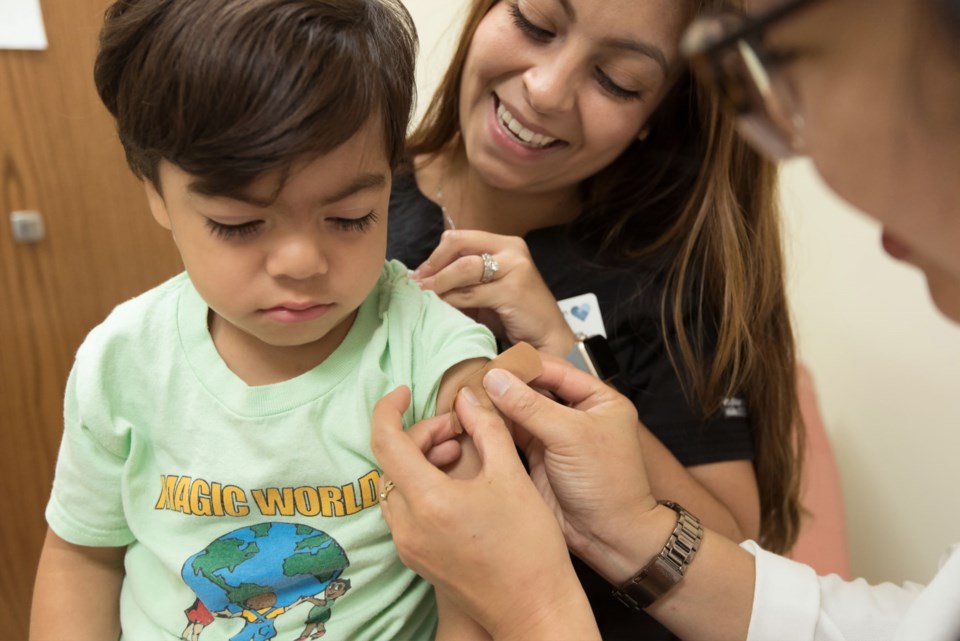To protect against easily-spread preventable diseases, Health Canada has a high vaccination coverage goal of 95 per cent for childhood vaccines by 2025.
With the target date fast approaching and cases of measles and pertussis on the rise, how close is Alberta to reaching the national immunization goal?
International standards and best practices recommend four doses of a diphtheria, tetanus, and pertussis (DTaP) by a child’s second birthday and two doses of the measles, mumps, and rubella (MMR) vaccine by age seven.
As of 2023, only 70.6 per cent of children were fully immunized for DTaP, and 72.6 per cent had received both doses of the MMR vaccine.
Alberta may fall short of the 95 per cent coverage goal, but it won’t be alone, says Shannon MacDonald, associate professor and Canada research chair in the Faculty of Nursing at the University of Alberta.
“We’ve never hit the targets. No province in Canada ever has,” MacDonald said.
In 2021, vaccination rates for DTaP ranged from a low of 70.3 per cent in Nova Scotia to a high of 95.8 per cent in Prince Edward Island.
But rather than moving toward the national vaccination targets, rates of coverage in Alberta have been slipping in recent years, and understanding why is key to reversing this trend, MacDonald said.
“We've always had jurisdictions and zones within the province that were particularly low,” she said. “And we did see a huge impact on routine childhood vaccines as a result of the pandemic. So, the two have sort of compounded now.”
Provincial vaccination rates for measles are down 5 per cent since the start of the pandemic, and even within a single zone coverage is inconsistent. Just under 95 per cent of children in the M.D. of Provost had two MMR doses by age seven. Two hours north in Two Hills County, only a quarter of kids were fully immunized against measles, mumps, and rubella.
“The concern, of course, is that when you bring a case of measles into an area with low vaccination coverage, you could end up then with an outbreak,” she said.
"And these kids are going to end up in hospital and land on the acute care system side, costing us money that we could have saved."
Much has been made about vaccine hesitancy or resurgent anti-vaccine sentiment and their role in driving down immunization, but MacDonald stressed there are barriers within the healthcare system that play a bigger role than personal choice.
“I always say to people, don't assume people are vaccine-hesitant until you ensure that you've solved the problem with access. If clinics are not open in the evenings, and people don't have ways to get to the clinic or they have to take time off work to get there, until you’ve solved all these things, don't assume that people don't want to get vaccinated.”
Vaccine coverage for routine childhood diseases by age two is around 30 per cent lower for people living in remote areas compared to those accessible areas, according to an analysis by the Public Health Agency of Canada. Similar disparities exist between people in the highest and lowest income brackets.
In rural areas of Alberta where additional outreach is needed to overcome barriers to access, public health workers are often already handicapped by chronic underfunding and related staffing problems, MacDonald said.
During the COVID-19 pandemic, public health authorities rolled out measures to improve vaccine uptake. Information campaigns were disseminated in multiple languages, reminders for booster shots were sent out, and vaccines were provided in easy to reach places.
The same approach could be taken with childhood diseases like measles to improve vaccination rates, “but it would cost money. And it would mean prioritizing it over some other things,” MacDonald said.



